Ozito OSIV-48 Handleiding
Ozito
Soldeermachine
OSIV-48
Bekijk gratis de handleiding van Ozito OSIV-48 (4 pagina’s), behorend tot de categorie Soldeermachine. Deze gids werd als nuttig beoordeeld door 80 mensen en kreeg gemiddeld 4.7 sterren uit 40.5 reviews. Heb je een vraag over Ozito OSIV-48 of wil je andere gebruikers van dit product iets vragen? Stel een vraag
Pagina 1/4

VARIABLE
TEMPERATURE
SOLDERING IRON
INSTRUCTION MANUAL
SPECIFICATIONS
Input: 230-240V ~ 50Hz
Power: 48W
Temperature Range: 100-470°C
Weight: 0.64kg
OSIV-48
STANDARD EQUIPMENT
WARRANTY
OZITO 25 Fox Drive, Dandenong South, Victoria, Australia 3175.
ozito.com.au
0322
IN ORDER TO MAKE A CLAIM UNDER THIS
WARRANTY YOU MUST RETURN THE PRODUCT
TO YOUR NEAREST BUNNINGS WAREHOUSE
WITH YOUR BUNNINGS REGISTER RECEIPT.
PRIOR TO RETURNING YOUR PRODUCT
FOR WARRANTY PLEASE TELEPHONE OUR
CUSTOMER SERVICE HELPLINE:
Australia: 1800 069 486
New Zealand: 0508 069 486
The benefits provided under this warranty are in addition to other rights and remedies
which are available to you at law.
Our goods come with guarantees that cannot be excluded at law. You are entitled to a
replacement or refund for a major failure and for compensation for any other reasonably
foreseeable loss or damage. You are also entitled to have the goods repaired or replaced
if the goods fail to be of acceptable quality and the failure does not amount to a major
failure.
Generally you will be responsible for all costs associated with a claim under this warranty,
however, where you have suffered any additional direct loss as a result of a defective
product you may be able to claim such expenses by contacting our customer service
helpline above.
TO ENSURE A SPEEDY RESPONSE PLEASE
HAVE THE MODEL NUMBER AND DATE OF
PURCHASE AVAILABLE. A CUSTOMER SERVICE
REPRESENTATIVE WILL TAKE YOUR CALL AND
ANSWER ANY QUESTIONS YOU MAY HAVE
RELATING TO THE WARRANTY POLICY OR
PROCEDURE.
GENERAL POWER TOOL SAFETY WARNINGS
SOLDERING IRON WARNINGS
WARNING! Read all safety warnings and all instructions. Failure to
follow the warnings and instructions may result in electric shock,
fire and/or serious injury.
1. Work area safety
a. Keep work area clean and well lit. Cluttered or dark areas invite accidents.
b. Do not operate power tools in explosive atmospheres, such as in the
presence of flammable liquids, gases or dust. Power tools create sparks
which may ignite the dust or fumes.
c. Keep children and bystanders away while operating a power tool.
Distractions can cause you to lose control.
2. Electrical safety
a. Power tool plugs must match the outlet. Never modify the plug in any
way. Do not use any adapter plugs with earthed (grounded) power tools.
Unmodified plugs and matching outlets will reduce risk of electric shock.
b. Avoid body contact with earthed or grounded surfaces, such as pipes,
radiators, ranges and refrigerators. There is an increased risk of electric
shock if your body is earthed or grounded.
c. Do not expose power tools to rain or wet conditions. Water entering a
power tool will increase the risk of electric shock.
d. Do not abuse the cord. Never use the cord for carrying, pulling or
unplugging the power tool. Keep cord away from heat, oil, sharp edges or
moving parts. Damaged or entangled cords increase the risk of electric shock.
3. Personal safety
a. Stay alert, watch what you are doing and use common sense when
operating a power tool. Do not use a power tool while you are tired
or under the influence of drugs, alcohol or medication. A moment of
inattention while operating power tools may result in serious personal injury.
b. Use personal protective equipment. Always wear eye protection. Protective
equipment such as dust mask, non-skid safety shoes, hard hat, or hearing
protection used for appropriate conditions will reduce personal injuries.
c. Prevent unintentional starting. Ensure the switch is in the off-position
before connecting to power source and/or battery pack, picking up or
carrying the tool. Carrying power tools with your finger on the switch or
energising power tools that have the switch on invites accidents.
d. Remove any adjusting key or wrench before turning the power tool on. A
wrench or a key left attached to a rotating part of the power tool may result in
personal injury.
e. Do not overreach. Keep proper footing and balance at all times. This
enables better control of the power tool in unexpected situations.
f. Dress properly. Do not wear loose clothing or jewellery. Keep your hair,
clothing and gloves away from moving parts. Loose clothes, jewellery or
long hair can be caught in moving parts.
h. Do not let familiarity gained from frequent use of tools allow you to
become complacent and ignore tool safety principles. A careless action can
cause severe injury within a fraction of a second.
4. Power tool use and care
a. Do not force the power tool. Use the correct power tool for your
application. The correct power tool will do the job better and safer at the rate
for which it was designed.
c. Disconnect the plug from the power source and/or the battery pack from
the power tool before making any adjustments, changing accessories,
or storing power tools. Such preventive safety measures reduce the risk of
starting the power tool accidentally.
d. Store idle power tools out of the reach of children and do not allow
persons unfamiliar with the power tool or these instructions to operate
the power tool. Power tools are dangerous in the hands of untrained users.
e. Maintain power tools. Check for misalignment or binding of moving parts,
breakage of parts and any other condition that may affect the power tool’s
operation. If damaged, have the power tool repaired before use. Many
accidents are caused by poorly maintained power tools.
g. Use the power tool, accessories and tool bits etc. in accordance with
these instructions, taking into account the working conditions and the
work to be performed. Use of the power tool for operations different from
those intended could result in a hazardous situation.
h. Keep handles and grasping surfaces dry, clean and free from oil and
grease. Slippery handles and grasping surfaces do not allow for safe handling
and control of the tool in unexpected situations.
WARNING! The appliance is not to be used by persons (including
children) with reduced physical, sensory or mental capabilities, or
lack of experience and knowledge, unless they have been given
supervision or instruction.
Young children should be supervised to ensure that they do not play with the
appliance.
• Ensure that the tip is correctly fitted before heating the soldering iron. Ensure
that it is fastened correctly and tightly with the clamping screw.
• Do not leave the soldering iron plugged in and unattended. Disconnect the tool
from the mains power once finished with use.
• Allow the tool to cool completely before storage. Rest the tool on the provided
stand or a non-flammable surface when required.
• The soldering iron must be placed on its stand when plugged in and not in use.
• A fire may result if the soldering iron is not used with care, therefore:
• be careful when using the appliance in places where there are combustible
materials. Do not apply to the same place for a long time.
• do not use in presence of an explosive atmosphere
• heat may be conducted to combustible materials which are out of sight
• Do not expose to water or moisture. Ensure no liquids enters the tool.
• This tool is intended for indoor use only.
• Never start up the soldering iron without a soldering tip fitted.
• Do not touch the tip while operating the tool.
• Only solder in well ventilated areas. Toxic fumes can be produced when
soldering which can lead to damage to the mucous membranes and or chronic
respiratory illnesses.
• Do not eat or drink whilst soldering as solder can contain lead. Always wash
your hands thoroughly after finishing work.
• Keep the hot soldering tip clear of the mains cable to prevent accidental
damage.
• Do not use the tool if the mains cable is damaged.
WARNING! When using mains-powered tools, basic safety
precautions, including the following, should always be followed
to reduce risk of fire, electric shock, personal injury and material
damage.
Read the whole manual carefully and make sure you know how to switch the
tool off in an emergency, before operating the tool. Save these instructions and
other documents supplied with this tool for future reference.
The tool has been designed for 230V and 240V only. Always check that the
power supply corresponds to the voltage on the rating plate.
Note: The supply of 230V and 240V on Ozito tools are interchangeable for
Australia and New Zealand.
ELECTRICAL SAFETY
48W
3 YEAR REPLACEMENT WARRANTY*
Your product is guaranteed for a period of 36 months from the original date of
purchase. If a product is defective it will be replaced in accordance with the terms of
this warranty. Warranty excludes consumable parts, for example: valve adapters and
accessories.
*This product is intended for DIY use only and replacement warranty covers domestic use.
WARNING
The following actions will result in the warranty being void.
If the tool has been operated on a supply voltage other than that specified on the tool.
If the tool shows signs of damage or defects caused by or resulting from abuse, accidents
or alterations.
Failure to perform maintenance as set out within the instruction manual.
If the tool is disassembled or tampered with in any way.
Professional, industrial or high frequency use.
Soldering Iron & Pointed Tip
48W
Soldering Station & Holder
Sponge, Flat Tip, 1.5mm
Solder & 1mm Solder
48W

48W
Setting Up The Stand
The work station stand provides a safe and secure way to rest the
tool during and after use while the tip is hot.
WARNING! DO NOT LEAVE THE TOOL PLUGGED IN
AND UNATTENDED. ALLOW IT TO COOL COMPLETELY
BEFORE STORAGE.
1. Push the bracket into the slot on the
station until you hear it click into
place.
Changing Tips
WARNING! ENSURE THE TOOL IS UNPLUGGED AND
COMPLETELY COOLED DOWN BEFORE CHANGING THE
TIPS.
The pointed soldering tip is great for detailed soldering work
such as on circuit boards or general soldering applications. This
can be swapped out with the other soldering tip to better suit the
application.
1. Unscrew the tip anti-clockwise
to remove the tip.
2. Rotate the desired tip clockwise
into the handle to install it.
WARNING! ENSURE THE SOLDERING TIP IS SECURE
BEFORE USING THE TOOL.
Tinning The Iron
1. If using the tip for the first time (or the tip has been cleaned off
completely), allow the soldering iron to heat up to temperature
level 3.
2. Then melt a little solder onto the
tip to coat. This process is called
tinning and protects the tips
from oxidising during use.
KNOW YOUR PRODUCT
1. ASSEMBLY
SETUP & PREPARATION
ONLINE MANUAL
Scan this QR Code with your mobile
device to take you to the online manual.
1. Power Cord
2. Handle
3. Soldering Tip
4. Holder
5. Flat Tip
6. On/Off Switch
7. Sponge Tray
8. Work Station
9. Temperature Control Dial
10. Indicator Light
11. Solder Spools
VARIABLE TEMPERATURE SOLDERING IRON
45 6 7
3
9 81011
1
2

2. CONTROLS 3. USAGE
OPERATION
OSIV-48
Temperature Settings
The temperature on this soldering
iron can be varied by rotating the
temperature control dial to the
desired setting.
The correct temperature setting
will depend on the solder used.
If the temperature is too low, the
solder will not melt sufficiently and flow properly onto the solder
joint.
If the temperature is too high, the solder will burn and the
electronics may be damaged from excess heat. Always start at a
low temperature and increase as necessary.
Usage Tips
1. Ensure the solder used is appropriate for the application.
2. Press the hot soldering tip into
a damp sponge occasionally
to remove any excess solder
that may have accumulated on
the tip. Do not hold it there for
too long as this can burn the
sponge.
WARNING! DO NOT HOLD THE SPONGE. PLACE THE
SPONGE ON THE TABLE AND WIPE THE SOLDERING
TIP AGAINST IT.
3. Soldering provides an electrical connection between parts, it
does not provide a strong mechanical joint. When soldering
wires ensure that they are joined properly by twisting the
exposed wires around each other before soldering.
4. Use the soldering iron to heat the workpiece not the solder wire.
Pressing the soldering tip against the solder wire will cause the
solder to melt onto the tip instead of the workpiece.
5. Do not use more solder than required. Use just enough to make
contact between the workpieces.
6. Clean the workpiece with steel wool or fine sandpaper if it is not
clean. This provides a better surface for the solder to adhere to
and a better electrical contact between parts.
Soldering
1. Rest the soldering iron
in the stand.
2. Wet the sponge and squeeze
out any excess liquid. Place the
damp sponge in the tray on the
work station.
3. Plug the power cord into a
mains socket, press the on/off
switch to the on “I” position and
allow the tool to heat up.
4. Use clamps (not supplied) to hold your workpieces steady.
5. Use the soldering tip to heat the
workpiece up.
6. Hold the solder wire against
the heated workpiece. The
workpiece should be sufficiently
heated that the solder melts and
flows into the join.
Note: If the solder wire doesn’t melt when touched to the
workpiece, then the workpiece has not heated sufficiently. Remove
the solder wire and allow the soldering iron to continue heating up
the workpiece.
7. Once enough solder has melted into the join, remove the solder
wire and then the soldering tip from the workpiece.
8. Allow the solder to cool and solidify.
9. When finished, return the soldering iron to the holder, press
the on/off switch to the off “0” position and allow it to cool
completely.
48W
Product specificaties
| Merk: | Ozito |
| Categorie: | Soldeermachine |
| Model: | OSIV-48 |
Heb je hulp nodig?
Als je hulp nodig hebt met Ozito OSIV-48 stel dan hieronder een vraag en andere gebruikers zullen je antwoorden
Handleiding Soldeermachine Ozito

19 April 2023

14 April 2023

24 Maart 2023

19 November 2022
Handleiding Soldeermachine
- Stamos
- Ferm
- RIDGID
- Uten
- Truper
- Telwin
- REMS
- Fixpoint
- Mag-Torch
- Rothenberger
- Mercury
- Einhell
- Draper
- Nedis
- Ersa
Nieuwste handleidingen voor Soldeermachine
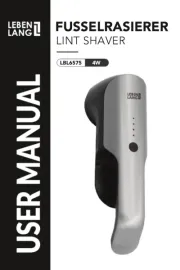
8 September 2025
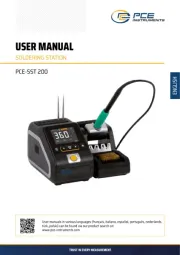
1 September 2025
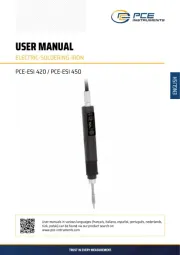
26 Augustus 2025
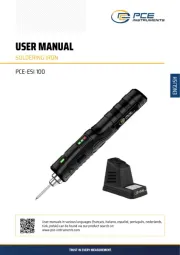
26 Augustus 2025

25 Augustus 2025
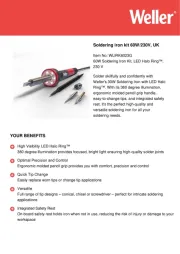
14 Augustus 2025
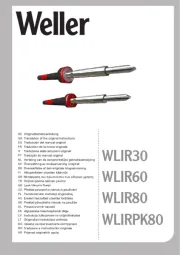
14 Augustus 2025
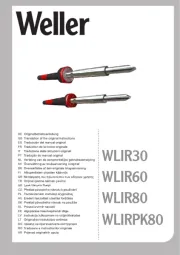
14 Augustus 2025
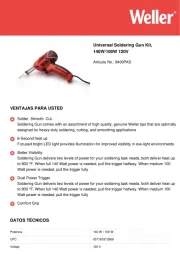
14 Augustus 2025
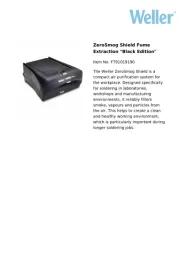
14 Augustus 2025